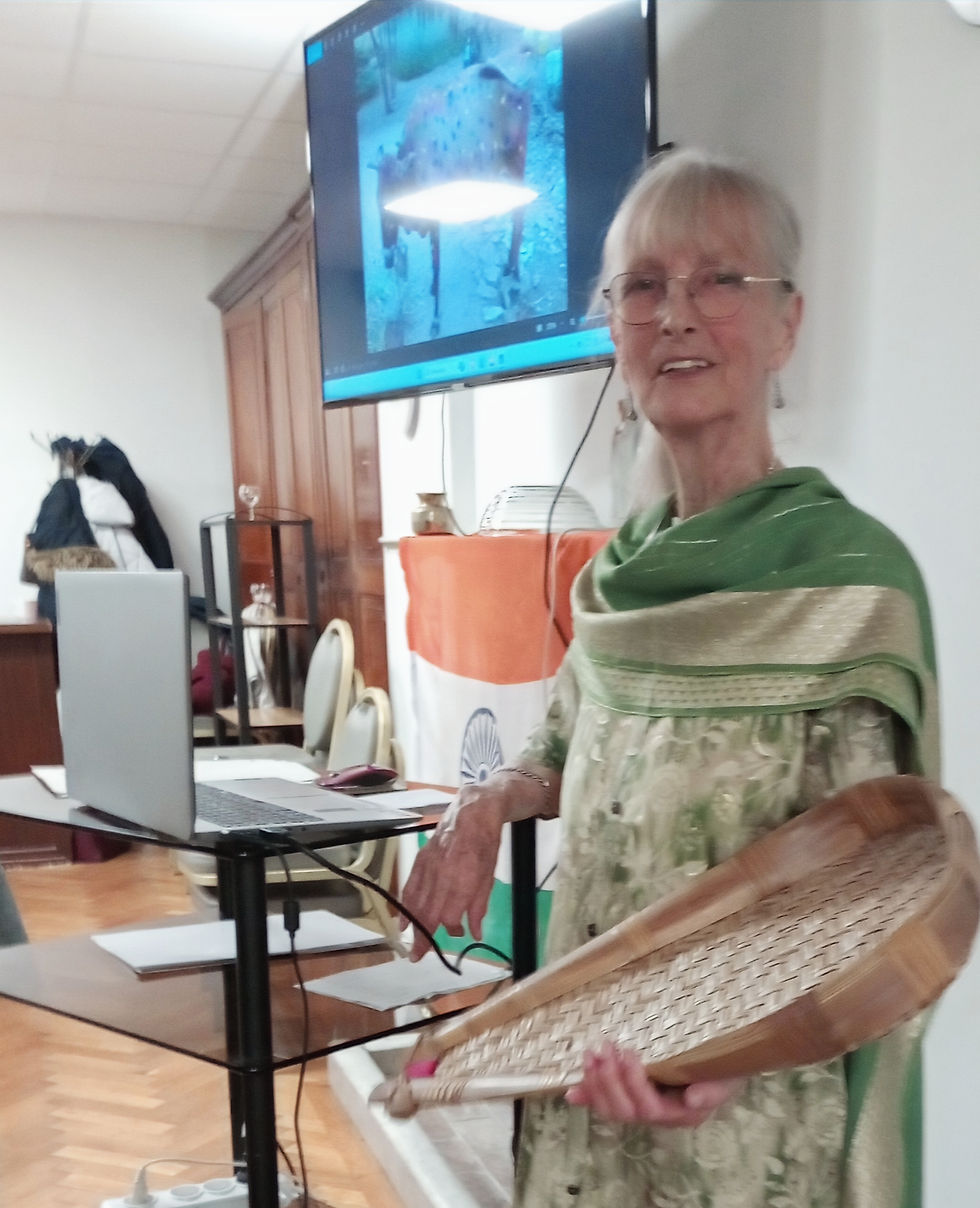
Last Saturday evening our churchwarden Jill Pirdas shared pictures and stories from her recent visit to India with around thirty of us gathered in the church hall. She updated us on the work undertaken by the Arogya Agam Project which has been run by her brother John for the past thirty years and which many Holy Trinity members continue to support.
Jill shared some examples of Arogya Agam’s projects that she had visited.
Work in thirty tribal villages.

This project involves supporting twenty six women's self-help groups, including applying to the government for housing loans and other benefits which will enable the villagers to market produce from their forests. These people are no longer able to live off the local forests that have been taken over by new land-owners and the forestry commission. In one village it has taken six years to get just six houses built.
Pre-school classes have also been set up for children from the age of five years. The government runs these "Balwadis" that provide a meal and (sometimes) a teacher! The project finds teachers to fill any gaps in government provision and also find hostels for the older children to enable them to continue their education further away.
Young people living with HIV.
This project has made amazing progress over the years but there are still issues to address including a current campaign to obtain better quality antiretrovirals for ninety four children who are on the danger list, because their present treatment is no longer working. A key take away from Jill's talk was that in the past three years, no child has been born with HIV in the area.
Children's groups in Dalit villages (Untouchables)
These groups offer play for the children while addressing issues in their villages. Such issues include: dropping out from school, child labour, early marriage for girls. The groups undertake tree planting and tackle pollution from plastics.
Women's self-help groups in eighty Dalit villages.
There are three hundred and forty of these groups. Dalits are discriminated against and have to do demeaning jobs like cleaning sewage and with no protection. The project's aim is to empower the
people themselves to obtain basic rights such as education, clean water, housing, drains and toilets. Jill visited and photographed four Arogya Agam projects in Dalit villages where the most discriminated-against population live. Women are helped to set up their own income-generating projects and are given legal aid and support when atrocities against Dalits are committed. In one village such a group has also managed to secure their own burial ground after years of nagging the government.
Jill explained that although it takes a long time for things to change, Arogya Agam has made a huge contribution to the area, in particular by working with the women in the villages and empowering them to make change happen. Although we could see that life was a struggle in

these villages, people's happy smiling faces gave everyone hope. When Jill and her brother went to the tea estates she was most taken by the smile of this lady and asked if she could take her photo. She had run out to see them when they stopped by the roadside and ran across with some cakes and sweets from her tiny shop. She then showed Jill her infected hands as she thought Jill and John were medical people!

This photo of a little girl on the beach was taken at a temple town where people get their heads shaved and then offer their hair to the temple. Their heads are then covered with sandalwood paste to protect them from the sun.
Jill also showed us a picture of three mischievous-looking10-year-old boys who had been diagnosed with HIV, including Samu who is in the middle and who loved getting up to pranks. Jill then showed us a recent photo of Samu, now 27 with his wife and baby Dora, looking healthy, handsome and settled. What a transformation!
Jill finished off her update with a quiz to identify some unusual photos – it was quite a struggle to get the right answers! Here are three more of Jill’s photos: a temple elephant being walked around the block, chalk being sold near the temple for making patterns on the ground and some of the monkeys which are everywhere (as John had his window down, the big male tried to get in the jeep)!
After Jill’s fascinating and highly informative talk, we enjoyed a delicious buffet to finish off a very enjoyable evening, which had been prepared by Christine H and Hannah, along with different dhals which Christine A and Veronica had cooked. We all learned so much, so huge thanks to Jill for sharing her photos, her stories, and her insights.










